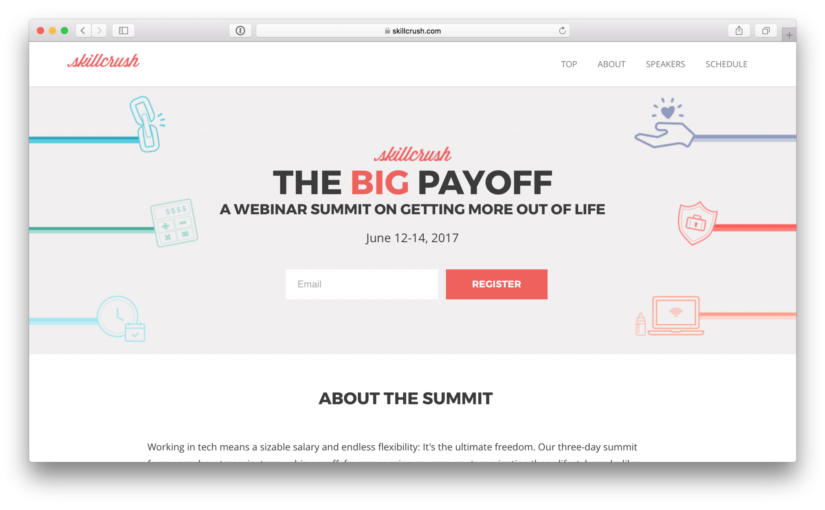I just watched the Skillcrush webinar, The Future is Bright: Why You Need to Invest in Yourself with Ellevest CEO and co-founder Sallie Krawcheck. Before becoming an entrepreneur, Krawcheck was CEO of Merrill Lynch Wealth Management, of Smith Barney and of Sanford Bernstein.
It was a little sobering to hear about the costs of leaving the workforce for a few years. I recently left my job to stay at home with our baby after she is born in July and have been planning to work part-time or work from home after getting adjusted to having a newborn.
Krawcheck crunched the numbers, saying if you take a break from working, you’re not just leaving your previous annual pay for the years you take off. You are also setting yourself up for a pay cut when you come back, which means that you will get raises off of the lower level through the course of your career. Also, in the time you’re off, you’re not contributing to a 401K or Social Security, so the financial hit is pretty significant.
“What I tell women is, the kiss of death can be–and it’s not too late, but–the kiss of death can be stepping out–fully out,” said Krawcheck.
“Imagine if you were in the senior marketing world five years ago and you stepped out,” said Krawcheck. “So, you left a world that was all about brand-building and you’re coming back into the world that is about brand-building and multi-touch attribution analysis. That’s an enormous change over what doesn’t seem like an extraordinarily long period of time.”
“What I tell everybody is either take a class, be with [Skillcrush] on the tech classes, go to General Assembly for marketing classes or volunteer [with] some nonprofit who can use your skill set so that you kind of keep your capabilities up or doing a little bit of consulting or do part-time, but something to keep your toe in the water.”
I was already planning on building marketable skills through learning online and volunteering, but her talk was the extra boost I needed. If you’re not keeping up on skills that you will need to get a job in the future, the world will pass you by. Technology and ways of doing business change quickly within a few years, so it’s best to keep reading, keep going to classes, keep learning new things.
It’s important to not become too complacent if you are deciding to become a stay-at-home mom. It’s best to prepare for the crisis scenario, that day that your husband loses his job or finances get really tight. How will you step in?
Honestly, I was pretty scared about this life change. I don’t know how to stay at home and have housework and chores be the main focus of my day. Depression and isolation is a very real threat to new moms because you go from having financial independence and going to a job where you interact with people every day to a situation where you’re at home, cooking/cleaning/taking care of the baby and maybe not seeing a single adult person until your husband comes home at 6 p.m.
The best way to combat this is to keep your mind engaged. Read the news. Listen to NPR. Take a business course online. Do whatever it is you need to do to keep focused.
If you’re interested in watching the full Skillcrush webinar with Sallie Krawcheck, I posted it below.
